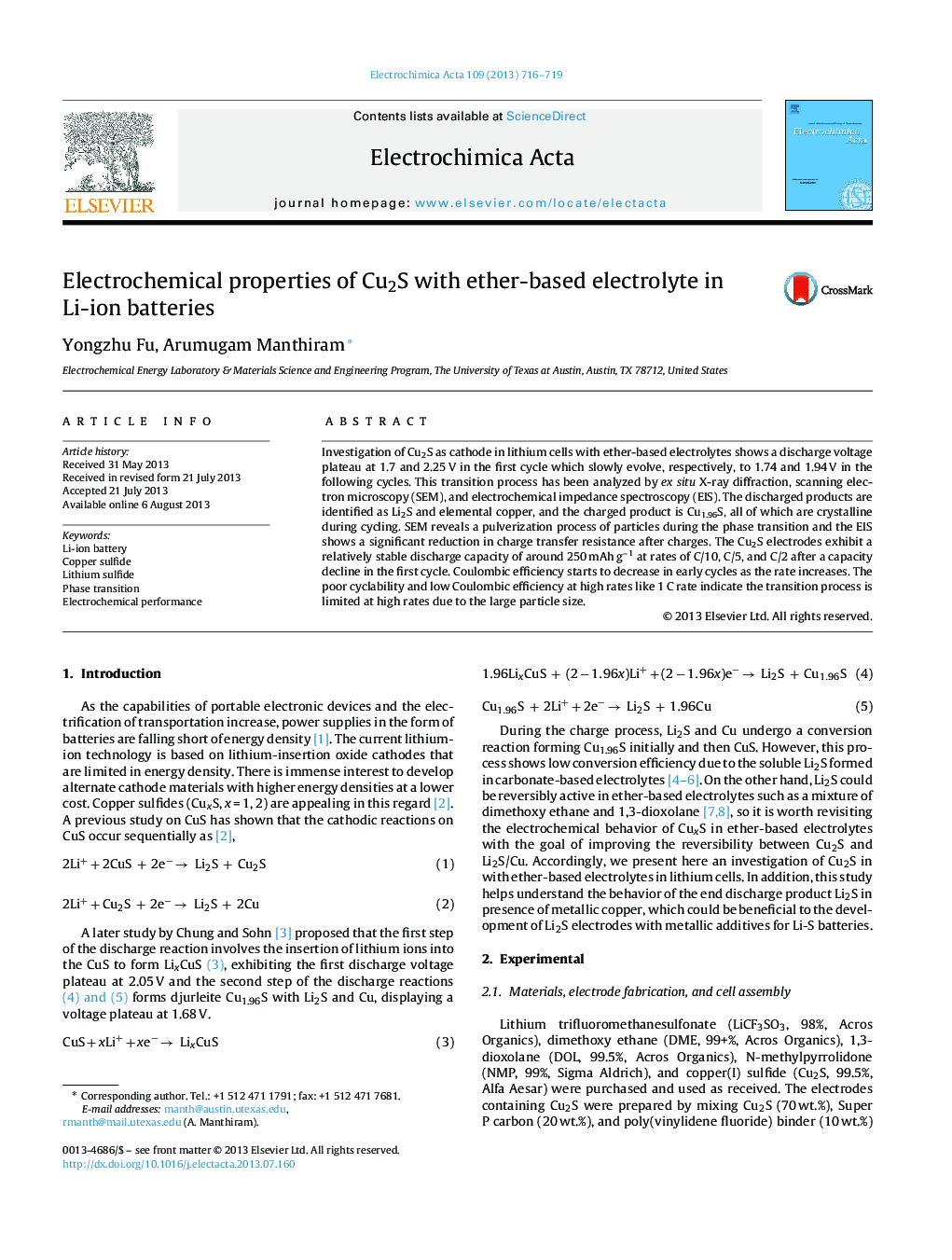| Article ID | Journal | Published Year | Pages | File Type |
|---|---|---|---|---|
| 6616507 | Electrochimica Acta | 2013 | 4 Pages |
Abstract
Investigation of Cu2S as cathode in lithium cells with ether-based electrolytes shows a discharge voltage plateau at 1.7 and 2.25 V in the first cycle which slowly evolve, respectively, to 1.74 and 1.94 V in the following cycles. This transition process has been analyzed by ex situ X-ray diffraction, scanning electron microscopy (SEM), and electrochemical impedance spectroscopy (EIS). The discharged products are identified as Li2S and elemental copper, and the charged product is Cu1.96S, all of which are crystalline during cycling. SEM reveals a pulverization process of particles during the phase transition and the EIS shows a significant reduction in charge transfer resistance after charges. The Cu2S electrodes exhibit a relatively stable discharge capacity of around 250 mAh gâ1 at rates of C/10, C/5, and C/2 after a capacity decline in the first cycle. Coulombic efficiency starts to decrease in early cycles as the rate increases. The poor cyclability and low Coulombic efficiency at high rates like 1 C rate indicate the transition process is limited at high rates due to the large particle size.
Related Topics
Physical Sciences and Engineering
Chemical Engineering
Chemical Engineering (General)
Authors
Yongzhu Fu, Arumugam Manthiram,
